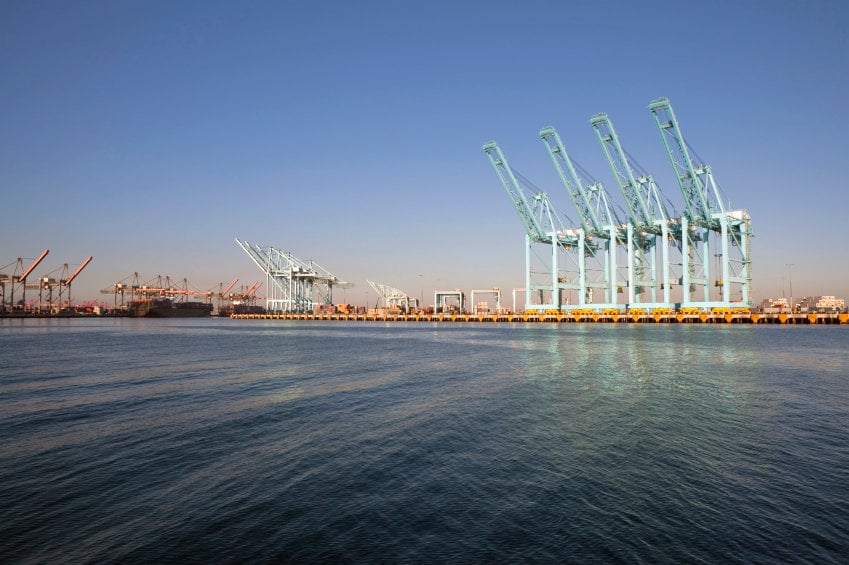The issue of piracy against merchant vessels poses a significant threat to world shipping. In 2011, there were 439 pirate attacks and 45 merchant vessels hijacked worldwide. 237 of these attacks and 28 of these hijackings occurred in the Gulf of Aden, off the coast of Somalia, and in the wider Indian Ocean. As of spring-2012 there have been more than 51 attacks off Somalia (121 worldwide), 11 hijackings off Somalia (13 worldwide), and over 158 hostages taken off Somalia. Currently, 12 ships and more than 170 seafarers are being held hostage by Somali pirates for ransom.
Although liner vessels, container ships and roll-on/roll-off vessels, are generally considered to be at lower risk for hijackings because of their higher operating speeds and freeboard (height above the water), liner vessels have been consistently targeted by Somali pirates. In 2010, 32 liner vessels were attacked and six were hijacked. In 2011, 65 liner vessels were attacked and one was hijacked. As of spring 2012, eight liner vessels have been attacked and one has been hijacked.
Somali pirates are now using hijacked merchant ships as mother ships to carry out attacks in the north Arabian Sea and near the coastline of India, more than 1500 nautical miles from Somalia. Pirates operate multiple, high-speed skiffs to approach and fire on the bridges of vessels with automatic weapons and rocket propelled grenades (RPGs) in an attempt to slow or stop the vessels so the pirates can get on board. Once a vessel has been hijacked, the pirates typically request a large ransom payment for the safe return of the crew, vessel and cargo.
Not only has piracy imposed a hidden tax on world trade generally, it has severely affected the economic activities of subject countries. Since 2006, East African countries have seen a marked decline in tourist arrivals and fishing yields. In the booming tourism sector, spending in East Africa since the surge in pirate activities has grown 25 percent more slowly than in other sub-Saharan African countries. Similarly, exports of fish products from piracy-affected countries compared to other regions have dropped by 23.8 percent since 2006, in part due to falling production. Total catches of tuna in the Western Indian Ocean have declined by 26.8 percent as vessels relocated to safer fishing grounds.
Somalia itself has also suffered considerably from the impact of piracy. Increased trade costs are estimated to cost the country US$6 million annually; and this figure does not take into account that Somalia cannot develop and expand its maritime trade and fisheries as long as pirates are allowed to operate in its waters.
In terms of the human cost of Somali piracy, as many as 3,741 crewmembers of 125 different nationalities have been captured, with detention periods as long as 1,178 days. As many as 97 sailors may have died either during the attacks, in detention after poor treatment, or during rescue operations.
Successfully addressing this threat is a complex challenge for both governments and businesses. However, current onshore or offshore policies for curbing piracy are either ineffective or likely unsustainable. Onshore interventions such as local economic development or law enforcement initiatives are intended to discourage young people from becoming pirates by increasing the attractiveness of alternative jobs or by promising long prison terms in case of capture. As the reports cautions, however, pirates will simply offer higher pay rates to poor, unemployed teenagers and young men to take the risk of capture or death at sea. While heavily-armed naval patrols and better security onboard commercial shipping are believed to explain why piracy plunged in 2011 and 2012, these measures are effective only as long as they stay in force.
In an effort to increase the governmental response to the piracy crisis, the leading maritime shipping associations and the International Transport Workers’ Federation (ITF) have initiated the “Save Our Seafarers” campaign, in which governments are asked to take the following steps to eradicate piracy at sea and ashore:
- Reduce the effectiveness of the easily identifiable pirate mother ships.
- Authorize naval forces to detain pirates and deliver them for prosecution and punishment.
- Fully criminalize all acts of piracy and the intent to commit piracy under national laws in accordance with their mandatory duty to cooperate to suppress piracy under international conventions.
- Increase naval assets available in the area.
- Provide greater protection and support for seafarers.
- Trace and criminalize the organizers and financiers behind the criminal networks.





